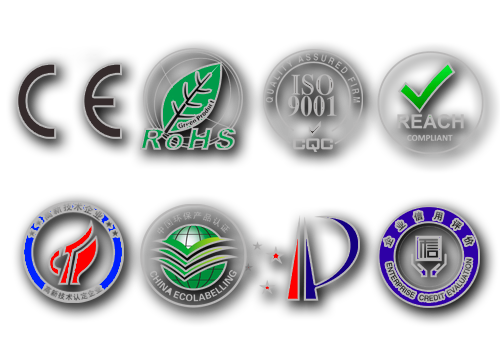Stainless steel clean workbench working principle
Stainless steel clean workbench working principleAir filtrationIts core principle is air filtration. The air will first pass through the primary filter, the primary filter is like a "thick screen", and can intercept the air of larger dust particles, hair, and other impurities. These impurities are usually more than 5μm in diameter. After the initial filtration, the air is passed into the HEPA filter. The high-efficiency filter is the real "fine filter." It can filter out particles with a diameter of 0.3μm or even smaller, including bacteria, viruses, and other microorganisms. The filtration efficiency can reach more than 99.99%. The doubly filtered clean air will be blown evenly to the work area vertically or horizontally, constantly pushing out the original polluted air to maintain air cleanliness in the work area. Air circulation In the vertical laminar flow stainless steel clean workbench, clean air is blown vertically down from the top HEPA filter, like an "air waterfall," forming a stable one-way airflow in the work area. This airflow can quickly remove pollutants generated during the work process, such as particles, aerosols, etc., to prevent them from accumulating in the work area. The horizontal laminar flow table is clean air from one side of the high-efficiency filter to the other side, forming a horizontal one-way airflow in the working area. This method is suitable for some work that has special requirements for the layout of the operating space, such as experimental operations on a long and narrow workbench. Structural composition Stainless steel housing and countertops The stainless steel shell is its strong "armor", usually made of high-quality stainless steel materials, such as 304 stainless steel or 316 stainless steel. 304 stainless steel has good corrosion resistance and can resist the erosion of general chemicals; 316 stainless steel is better in corrosion resistance, especially suitable for some environments that may be exposed to more corrosive substances, such as Marine environments or laboratories where acid-base reagents are used. The countertop is the direct bearing area of the work, and its flat, smooth stainless steel surface is not only easy to clean but also prevents the accumulation of dust and microorganisms. The stainless steel table has a high strength and can withstand a certain weight of experimental equipment, tools, and other items. Filtration system As mentioned earlier, the filtration system includes a primary filter and a high-efficiency filter. The primary filter is generally made of non-woven fabrics, glass fibers, and other materials, and its structure is relatively loose, but it can effectively intercept large particles of impurities. Hepa filters are usually composed of materials such as ultra-fine glass fiber filter paper, which is folded into a complex shape to increase the filter area, and there are materials such as sealant around the filter paper to ensure that air can only be filtered through the filter paper, and will not leak from the edge. Fan system The fan is the "power heart" of the clean workbench, which is responsible for drawing air into the filtration system and blowing the filtered clean air into the work area. The performance of the fan directly affects the clean air supply and airflow speed of the workbench. Centrifugal fans or axial-flow fans are generally selected, and the centrifugal fan has a large wind pressure, which can ensure that the air has enough pressure when passing through the filtration system, and is suitable for situations where the resistance of high-efficiency filters is large. The axial fan has a larger flow rate and is widely used in some clean work tables with higher airflow requirements and less resistance. Lighting system In order to facilitate the operation of the workbench, it is usually equipped with a lighting system. Lighting fixtures are generally installed on the top of the workbench interior, using fluorescent or LED lights. LED lamps have the advantages of energy saving, high brightness, long service life, and will not produce too much heat to avoid affecting the temperature and airflow stability of the working area. |

 German
German French
French Italian
Italian Portuguese
Portuguese Japanese
Japanese Korrean
Korrean Russian
Russian




